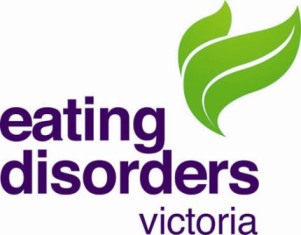A healthy move in fighting the battle against eating disorders, Vogue magazine, perhaps the world's top arbiter of style, is making a statement about its own models: banning the use of skinny models.

Frank Apostolopoulos
Vogue magazines around the world have made a pact to project the image of healthy models. They agreed to "not knowingly work with models under the age of 16 or who appear to have an eating disorder."
"Vogue believes that good health is beautiful. Vogue editors around the world want the magazines to reflect their commitment to the health of the models who appear on the pages and the well-being of their readers," said Conde Nast international chairman Jonathan Newhouse in a statement.
Australian Hairdresser of the Year and Eating Disorders Victoria (EDV) Ambassador, Frank Apostolopoulos is doing his part in the industry to encourage positive eating. With the support of his BIBA group of salons he is getting behind a new campaign to raise awareness for the risk of dieting and eating disorders titled, Feed The Soul.
“Considering the huge impact the media and fashion industries play in influencing social ideas of beauty and body image we are delighted to have the Australian Hairdresser of the Year, Frank Apostolopoulos as an Ambassador for EDV and helping drive awareness for Feed The Soul,” said CEO Eating Disorders Victoria, Jennifer Beveridge.

“5 per cent of the Australian community will develop an eating disorder in their lifetime and the role the media plays in our self image is enormous. The pursuit of the unattainable has clear negative impacts on the mental health, self esteem and well being of may people so it’s great to see fashion magazines such as Vogue taking the lead in promoting positive body images,” said Frank.
Frank has worked with some of the biggest names in modelling in the country and seen first hand the impact severe dieting can have on not only a person’s health but state of mind; along with the role the fashion media play in creating unattainable and unrealistic body images.
“I have worked with many international models who starve themselves in order to gain work in cities like New York and Paris; as the fashion industry overseas often demands unrealistically thin models. Australians would not tolerate this, which is a great thing.”
“We are very lucky in Australia that our fashion and media industries value healthy, natural looking women. Of course many models are not representative of the general population and lack a diversity of body shapes and sizes; however this is also driven by consumer demand as well as advertisers desire to sell an image of ‘perfection’ for consumers to aspire to, yet never attain.”
In fact, today's fashion models weigh 23 per cent less than the average female, and a young woman between the ages of 18-34 has a 7 per cent chance of being as slim as a catwalk model and a 1 per cent chance of being as thin as a supermodel. However, 69 per cent of girls in one study said that magazine models influence their idea of the perfect body shape, and the pervasive acceptance of this unrealistic body type creates an impractical standard for the majority of women.
“Perhaps if we become a little more aware of what effort and enhancements go into a photo shoot – we can enjoy the image for its beauty, yet not use it as a means to measure ourselves. Unless of course we are able to spend hours in hair and makeup, be followed around with softening lighting and a little computer whiz to delete any traces of human character along the way.”
“This is why BIBA is getting behind the Feed The Soul campaign; to not only help us celebrate food and its importance in our lives but provide a forum to talk openly and drive awareness around the issues of body image, diet and both mental and physical health,” says Frank.

